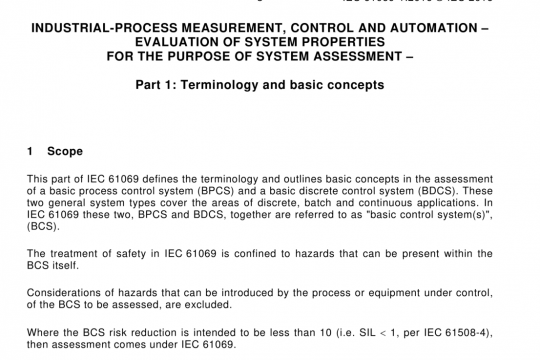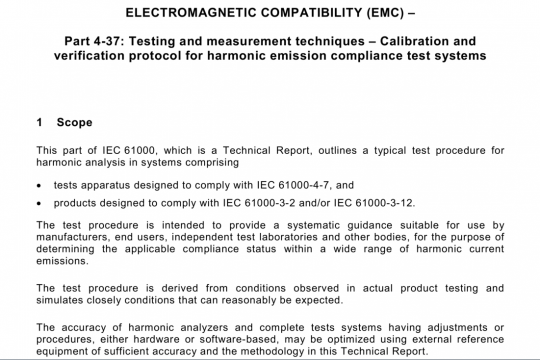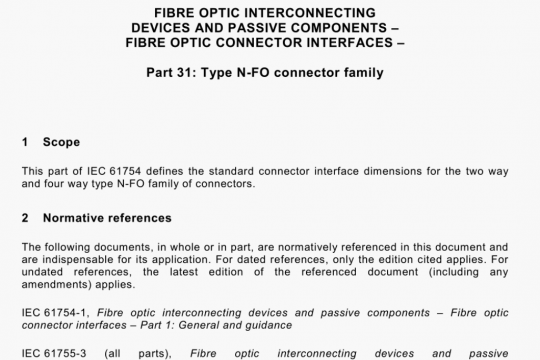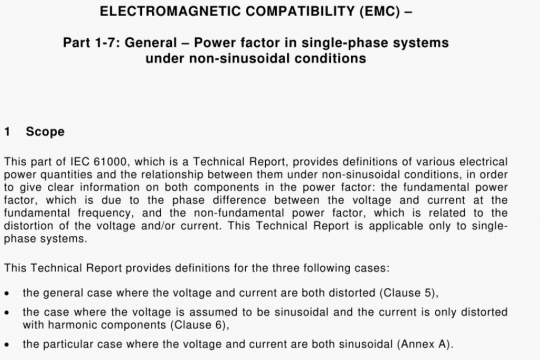IEC 60076-7 pdf free download
IEC 60076-7 pdf free download.Power transformers – Part 7: Loading guide for mineral-oil-immersed power transformers.
Voltages on both sides of the loaded transformer, therefore, are observed during loading beyond the nameplate rating. As long as voltages at the energized side of a loaded transformer remain below the limits stated in IEC 60076-1 :2011 (5), Clause 4, no excitation restrictions are needed during the loading beyond nameplate rating. When higher excitations occur to keep the loaded voltage in emergency conditions in an area where the network can still be kept upright, then the magnetic flux densities in core parts never exceed values where straying of the core flux outside the core can occur (for cold-rolled grain-oriented steel these saturation effects start rapidly above 1,9 T). Stray fluxes may cause unpredictably high temperatures at the core surface and in nearby metallic parts such as windin9 clamps or even in the windings, due to the presence of high-frequency components in the stray flux. They may jeopardize the transformer. In general, in all cases, the short overload times dictated by windings are sufficiently short not to overheat the core at overexcitation. This is prevented by the long thermal time constant of the core.
As a consequence, there will be a risk of premature failure associated with the increased currents and temperatures. This risk may be of an immediate short-term character or come from the cumulative effect of thermal ageing of the insulation in the transformer over many years.
5.3 Effects and hazards of short-time emergency loading
Short-time increased loading will result in a service condition having an increased risk of failure. Short-time emergency overloading causes the conductor hot-spot to reach a level likely to result in a temporary reduction in the dielectric strength. However, acceptance of this condition for a short time may be preferable to loss of supply. This type of loading is expected to occur rarely, and it should be rapidly reduced or the transformer disconnected within a short time in order to avoid its failure. The permissible duration of this load is shorter than the thermal time constant of the whole transformer and depends on the operating temperature before the increase in loading; typically, it would be less than half-an-hour.
The main risk for short-time failures is the reduction in dielectric strength due to the possible presence of gas bubbles in a region of high electrical stress, that is the windings and leads. These bubbles are likely to occur when the hot-spot temperature exceeds 140 °C for a transformer with a winding insulation moisture content of about 2 %. This critical temperature will decrease as the moisture concentration increases.
NOTE Concerning the bubble generation, see also lEG 60076-14
a) Gas bubbles can also develop (either in oil or in solid insulation) at the surfaces of heavy metallic parts heated by the leakage flux or be produced by super-saturation of the oil. However, such bubbles usually develop in regions of low electric stress and have to circulate in regions where the stress is higher before any significant reduction in the dielectric strength occurs.
Bare metallic parts, except windings, which are not in direct thermal contact with cellulosic insulation but are in contact with non-cellulosic insulation (for example, aramid paper, glass fibre) and the oil in the transformer, may rapidly rise to high temperatures. A temperature of 180 ‘C should not be exceeded.
b) Temporary deterioration of the mechanical properties at higher temperatures could reduce the short-circuit strength.
c) Pressure build-up in the bushings may result in a failure due to oil leakage. Gassing in condenser type bushings may also occur if the temperature of the insulation exceeds about 140 ‘C.
d) The expansion of the oil could cause overflow of the oil in the conservator.
e) Breaking of excessively high currents in the tap-changer could be hazardous.
The limitations on the maximum hot-spot temperatures in windings, core and structural parts
are based on considerations of short-term risks (see Clause 7).
The short-term risks normally disappear after the load is reduced to normal level, but they need to be clearly identified and accepted by all parties involved, e.g. planners, asset owners and operators.IEC 60076-7 pdf download.




